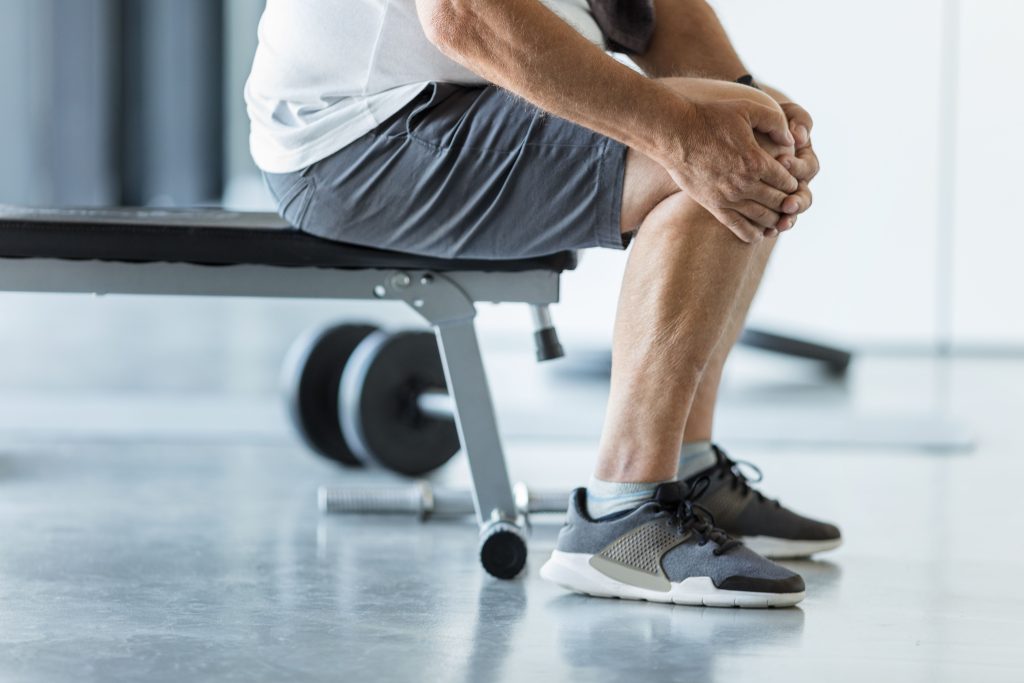Posterior Cruciate Ligament (PCL) Injury: A Comprehensive Guide
The Posterior Cruciate Ligament (PCL) is an important component of the knee joint. It is located at the back of the knee, connecting the thigh bone (femur) to the shin bone (tibia). The PCL works with another ligament called the anterior cruciate ligament (ACL) to control the movement of the knee, especially during activities that involve sudden changes in direction or impact. The stability and good function of the knee depend on this ligament.
Types of Posterior Cruciate Ligament (PCL) Injuries
PCL injuries are categorised based on their severity. They can range from mild sprains to complete tears. Here are the main types:
Grade I
Grade I injuries involve a slight tear or stretching of the PCL. The ligament remains intact but is mildly damaged. Symptoms are minor, with some pain and swelling but no significant instability in the knee.
Grade II
Grade II injuries are partial tears of the PCL. This kind of injury causes moderate pain and swelling, with some instability in the knee joint. It might be harder to do some activities if you strain your knee.
Grade III
Grade III injuries are complete tears of the PCL. There is severe pain, swelling, and stiffness as an effect of the ligament being torn into two parts. During activities, the knee may give out, making it difficult to walk or carry weight.
Grade IV
Grade IV injuries involve damage to the PCL along with other ligaments in the knee. These are serious injuries that often result from high-impact trauma. This requires complex treatment and results in considerable pain, swelling, and instability.
Causes of Posterior Cruciate Ligament (PCL) Injury
Posterior Cruciate Ligament (PCL) injuries occur when the ligament is stretched or torn due to excessive force. Here are the common causes:
Severe Accidents
A direct blow to the knee, especially when the knee is bent often happens in car accidents when the knee strikes the dashboard. High-impact incidents, such as falling from a height or being in a motorcycle accident, can also cause PCL injuries. These events often result in damage to multiple ligaments in the knee.
Sports Injuries
Football, basketball and skiing are examples of sports where athletes are at higher risk of PCL injuries as they involve sudden changes in direction, jumping, or direct impact.
Falling on the Knee
Falling on a bent knee can exert excessive force on the PCL, leading to a tear or sprain. This type of injury can occur during activities like hiking, running, or even walking on uneven surfaces.
Hyperextension
Hyperextension of the knee, where the knee is bent backward too far can happen during sports or accidents, where the knee is forced beyond its normal range of motion.
If you suspect PCL injury, see an orthopaedic surgeon right away. PCL injuries often occur with other ligament injuries or severe knee trauma, so you should be checked early for these other conditions.
Symptoms of Posterior Cruciate Ligament (PCL) Injury
Recognising the symptoms of a PCL injury can help in seeking timely medical attention. Here are some common signs and symptoms:
Pain and Swelling
One of the first signs of a PCL injury is pain and swelling in the knee. This may happen right away after the damage or take a few hours for it to appear. The pain can range from mild to severe, depending on the extent of the injury.
Knee Instability
A PCL injury often causes the knee to feel unstable or “wobbly”. This instability can make it difficult to walk or perform activities that require a steady knee.
Limited Range of Motion
Injuries to the PCL can lead to a reduced range of motion in the knee. Bending or straightening the knee fully may be difficult and painful.
Bruising
Bruising around the knee may appear after a PCL injury. This is due to bleeding within the tissues surrounding the ligament.
Difficulty Bearing Weight
A significant PCL injury can make it hard to bear weight on the affected leg. Walking, running, or even standing may be painful and challenging.
“Popping” Sensation
Some people report a “popping” sensation in the knee at the time of injury. This can be a sign of a ligament tear.
Diagnosis of Posterior Cruciate Ligament (PCL) Injury
A PCL injury is diagnosed by looking at the patient’s medical history, performing a physical examination, and using imaging procedures. Here is how an orthopaedic surgeon diagnoses this condition:
Step-By-Step Procedures
1. Medical History
The orthopaedic surgeon will ask how the injury occurred, about the symptoms experienced, and any previous knee injuries or conditions to identify the type and extent of ligament damage.
2. Physical Examination
During the physical examination, the orthopaedic surgeon will inspect the knee for signs of swelling, bruising, and instability. Specific tests, such as the posterior drawer test, are performed to assess the integrity of the PCL. In this test, the orthopaedic surgeon pushes the shin bone backward to check for abnormal movement. Other tests may include assessing the range of motion and checking for tenderness around the knee.
3. Imaging Procedures
To determine the extent of the PCL damage and to confirm the diagnosis, imaging studies are necessary. Common methods of imaging consist of:
- X-rays: X-rays provide images of the bones and can help rule out fractures or other bone injuries that might accompany a PCL injury. However, X-rays do not show soft tissues like ligaments.
- MRI (Magnetic Resonance Imaging): An MRI provides detailed images of the knee’s soft tissues, including the ligaments, cartilage, and muscles. An MRI can reveal the extent of the PCL tear and identify any associated injuries to other knee structures.
- Ultrasound: This procedure uses sound waves to create images of the soft tissues in the knee and can be helpful in assessing ligament injuries.
Treatment Options for Posterior Cruciate Ligament (PCL) Injury
Treatment for PCL injuries varies depending on the severity of the injury. Options range from non-surgical methods to surgical intervention. The main treatment approaches are as follows:
Non-Surgical Treatments
Rest and Lifestyle Changes
For minor PCL injuries, resting the knee and avoiding activities that cause pain can help it heal faster. Changing your lifestyle and wearing a knee brace to reduce stress on the knee helps to provide additional support and stability, especially during the early stages of recovery.
Ice and Compression
Applying ice to the injured knee can reduce pain and swelling. Using an elastic bandage or compression wrap also helps manage swelling and provides support to the knee.
Physical Therapy
Physical therapy is essential for regaining strength, stability, and range of motion in the knee. A physical therapist will design a personalised exercise program to strengthen the muscles around the knee and improve joint function.
Surgical Treatments
Surgery may be necessary for severe PCL injuries, particularly if the ligament is completely torn or if there are multiple ligament injuries. Surgical options include:
PCL Reconstruction
A graft is used to replace the torn tissue in PCL reconstruction. The graft can come from either the patient or a volunteer. Another name for this type of graft is an allograft. To stabilise the knee, the orthopaedic surgeon uses pins or other fixation devices to attach the graft to the bones.
Arthroscopic Surgery
In this minimally invasive process where small incisions are made around the knee. A tiny camera is inserted into the knee joint to provide a clear view of the PCL and other components. It causes less pain and a faster recovery than open surgery.
Rehabilitation and Recovery
The rehabilitation process typically involves progressive exercises that gradually increase in intensity as healing progresses. Here are the main aspects:
Initial Phase: In the initial phase of rehabilitation, the focus is on reducing pain and swelling. Gentle range-of-motion exercises are advised to prevent stiffness and maintain flexibility. To treat inflammation, ice and massage can be used on the affected areas.
Strengthening Phase: Once the initial symptoms have gone away, the focus changes to activities that strengthen the quads, hamstrings, and calves to help support the knee joint.
Functional Training: Functional training involves exercises that look like everyday activities and sports movements to restore full function to the knee, allowing the patient to return to their normal activities safely. Activities may include squats, lunges, and agility drills.
Recovery Process
The recovery process for a PCL injury varies depending on the severity of the injury and the treatment approach. Here’s a general outline:
Mild Injuries
For mild PCL injuries, recovery may take a few weeks to a couple of months. Non-surgical treatments such as rest, ice, and physical therapy are usually sufficient. Over-the-counter pain relievers like ibuprofen or acetaminophen can help you deal with pain and reduce swelling while you heal.
Moderate Injuries
Moderate PCL injuries may require several months of rehabilitation. A structured physical therapy program is essential to regain strength and stability.
Severe Injuries
Severe PCL injuries, especially those requiring surgery, have a longer recovery period. It may take six months to a year to fully recover. Post-surgery rehabilitation is intensive and includes doing more difficult tasks over time to make sure you fully recover. Prescription pain medications may be needed initially to manage post-surgery pain. As healing progresses, over-the-counter painkillers can be used instead.
Monitoring Progress
Regular follow-up appointments with your orthopaedic surgeon are important to monitor progress and make any necessary adjustments to the rehabilitation program. Imaging tests, such as MRI or X-rays, may be used to assess the healing process.
Prevention of PCL Injury
Preventing PCL injuries involves adopting practices that protect the knee from stress and trauma. Here are some prevention strategies:
Strengthening Exercises: Perform exercises that strengthen the muscles around the knee, especially the quadriceps and hamstrings. Strong muscles support and stabilise the joint.
Proper Technique: Use correct techniques during sports and activities. Learn the proper way to jump, land, and change direction to avoid stressing the knee.
Protective Gear: Wear protective gear, like knee braces or pads, especially in contact sports. This provides extra support and reduces the risk of impact injuries.
Warm-Up and Stretching: Warm up before physical activities to increase blood flow to the muscles. Stretching before and after activities maintains flexibility and reduces injury risk.
Avoid High-Risk Activities: If you have a history of knee injuries, avoid activities that put stress on the knees. Opt for low-impact activities like swimming or cycling.
Conclusion
Maintaining knee function and health requires an understanding of and approach to PCL injuries. Injuries to the posterior cruciate ligament can have a major negative effect on mobility and quality of life. This ligament is essential for stabilising the knee. To choose the best course of therapy, an accurate diagnosis made possible by a thorough medical history, physical examination, and imaging studies is necessary. Practising safe habits, such as strengthening exercises, employing protective gear, and using good technique during physical activities, is necessary to prevent PCL injuries.




